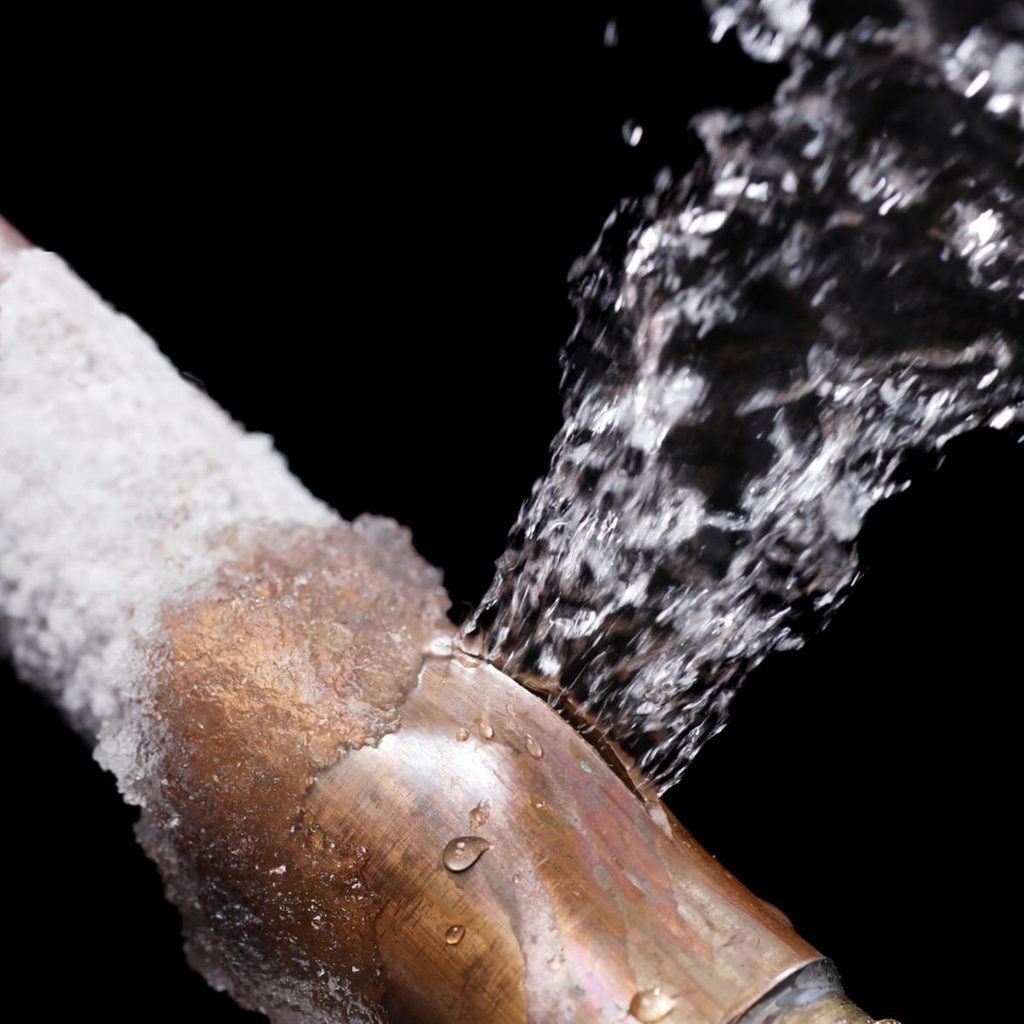Here’s How to Keep Pipes From Freezing This Winter
Updated: Oct. 20, 2022

Preventing frozen pipes is easy. Repairing the damage from frozen pipes that burst is not.
Few homes in this country are immune to the threat of frozen pipes. Wherever you live and whatever kind of home you live in, all it takes is one cold snap to unleash a flood of destruction through your home. It’s one of the most common causes of property damage. Fortunately, frozen pipes are easy to prevent.
On This Page
What Happens When Pipes Burst?
When water freezes, it expands in volume by about nine percent. And it expands with tremendous force: The pressure inside pipes may go from 40 pounds per square inch (psi) to 40,000! No pipe can hold that much pressure, so it breaks open.
The burst pipe may occur where the ice forms. More often, it happens where water pressure finds a weak spot in the pipe. That may be inches or even feet from the frozen area.
A burst pipe can send a torrent of water into your home, flooding your basement or other areas, causing structural damage and other serious issues that will be expensive to repair. It can lead to unseen problems, too, like a mold infestation.
Pipes that run through the unheated parts of your home, like the garage or basement, as well as pipes in the exterior walls are most susceptible to freezing. Any pipes directly exposed to the elements, like hose bibs, evaporative cooler supply lines, sprinkler lines and others, are especially vulnerable, too.
Steps to Prevent Pipes from Freezing
It’s easy enough to know when the temperatures threaten to dip into the danger zone, so heed the warnings from the National Weather Service or your local weather reporter. When the mercury does drop, take action with a few easy steps that will help prevent your pipes from freezing.
Outside the house
- If you have a pool, drain it before winter arrives. Drain your sprinklers, too.
- Disconnect garden hoses from outdoor faucets. Even frostproof outdoor faucets can burst if a hose is connected. Turn off the supply lines to the hose bibs inside the house and let the remaining water drain from the pipes leading to the outdoor faucets.
- If you have an evaporative cooler, make sure it’s drained, then turn off the water supply and disconnect it for the season.
Inside the house
- Turn up the heat.
- Set up fans to blow heat into cold rooms, or use space heaters.
- Open vanity or cabinet doors so warm air can reach the pipes under sinks.
- If you have exposed pipes inside closets or pantries, leave doors open.
- Keep the garage door closed.
- Reduced water flow is usually the first sign ice is forming in your pipes. If that happens, grab a hairdryer and heat the most vulnerable pipes, usually in basements and crawl spaces or near exterior walls. Leave the faucet on while you apply heat. As you melt ice, the flow will increase.
Let the Water Run to Prevent Pipes from Freezing
A tiny trickle from faucets makes freezing less likely, protecting pipes in two ways. First, it prevents pressure from building up inside pipes. Second, it creates a constant flow of water through pipes, making freezing much less likely.
Permanent Protection to Prevent Pipes from Freezing
Long-term freeze prevention is usually a major project, like insulating a crawl space, replacing standard outdoor faucets with frostproof models, or even rerouting pipes away from cold spots inside the home.
Start by calling in a professional plumber to assess your situation and make recommendations. Keeping the house warm in winter is a good start.
Insulating pipes exposed in unheated areas of your home is another measure you can use to help prevent them from freezing. There are several ways to go about that.
The easiest is wrapping them in foam insulation. Measure the length of pipe you need to insulate and cut the foam pieces to size. Wrap the pipes with the insulation, and make sure to seal the seam with tape if the insulation doesn’t include a self-sealing strip. Pipe wrap insulation is another option.
Add Heat Tape
Pipe insulation alone, however, often isn’t enough. If your water lines are particularly vulnerable, you may want to consider attaching heating cable or heat tape to your pipes. A thermostat switches on the heat only when the temperature drops, so heat cable won’t waste electricity.
For added protection, you can put insulation over it, but check the manufacturer’s instructions first; they may recommend specific types of insulation. But if you need to protect lots of pipes for long periods, heat cable can be an expensive solution.
One bonus for heat cable: It can help thaw frozen pipes, too.
